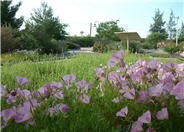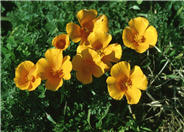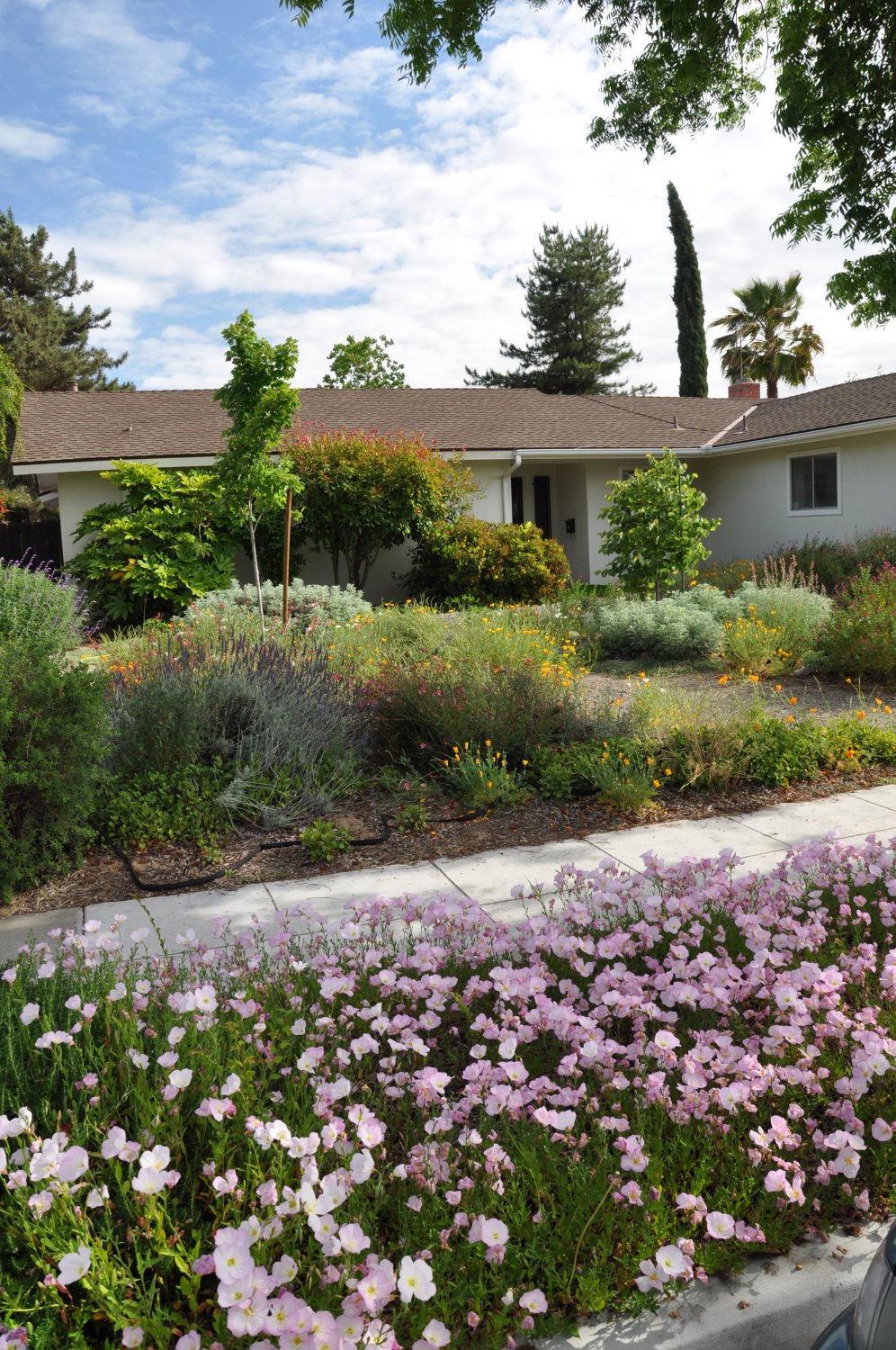
Common name:Siskiyou Mexican Evening Primrose
Botanical name:Oenothera speciosa 'Siskiyou'
The Mexican primrose is a perennial groundcover that remains under 1' tall with profuse pink flowers in the summer. It spreads quickly by underground rhizomes, is drought tolerant, and hardy to 10 degrees F. It attracts birds. It may be considered invasive in some areas. This is a great plant for difficult, dry hillsides.

Common name:California or Golden Poppy
Botanical name:Eschscholzia californica
This small annual (sometimes acts as a perennial) plant will grow to less than 1' tall and has light, small blue-green leaves with gold and orange flowers that bloom in spring and summer.

Common name:Blue Lavandin, Provence Lavender
Botanical name:Lavandula X intermedia 'Provence'
'Provence' has true lavender-colored flowers that are fragrant and excellent for cutting. It flowers in early June and has large, grey-green leaves. It reaches 2' tall.

Common name:Japanese Fatsia
Botanical name:Fatsia japonica
This evergreen shrub has large, glossy, fan-like leaves that grow to 16" wide. It has a moderate growth rate to a size of 5'-8' that can be kept lower with occasional pruning. It has a very lush, tropical appearance, and grows well in partial shade.

Common name:Mexican Bush Sage, Mexican Sage
Botanical name:Salvia leucantha
The Mexican Sage is a bushy shrub that grows 3'-4' tall and wide. It has hairy white stems, grey-green leaves and velvet-like purple flower spikes that bloom summer through fall. This shrub tolerates sun, light shade, low to moderate water, and is cold hardy to 15 degrees F. The Mexican Sage attracts hummingbirds. Be careful not to overwater.
| Designer: | Pink Curb |
Photographer: GardenSoft |
Soils and Compost:
Maintain a two to four inch layer of mulch on the soil surface to reduce weeds, infiltrate rain water, and reduce compaction.
Water Saving Tip:
Check your irrigation controller once a month, and adjust as necessary.
Most plants require only one-third as much water in winter as they do in summer.
Integrated Pest Management:
Drip and other smart irrigation delivers water directly to roots, allowing no excess water for weeds.

